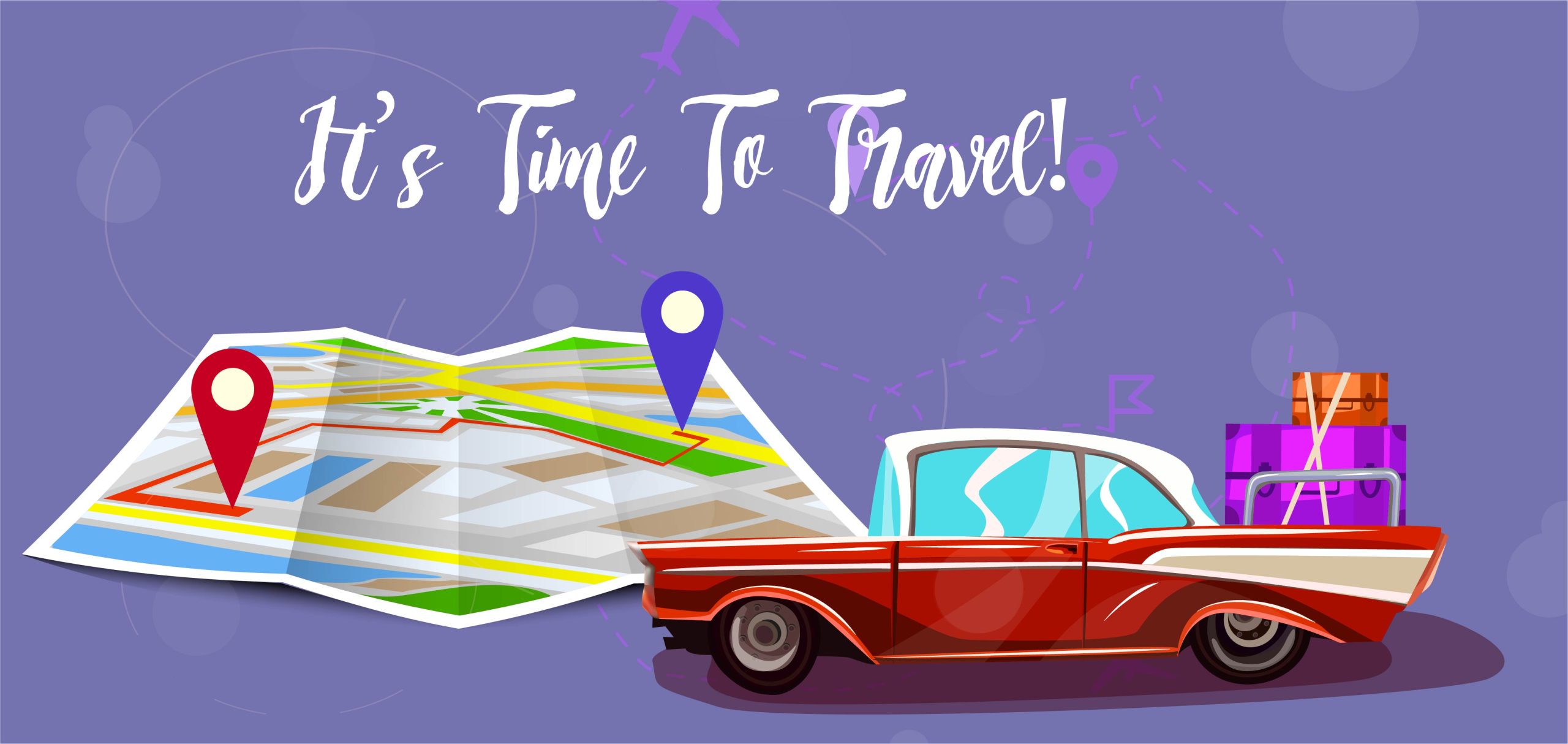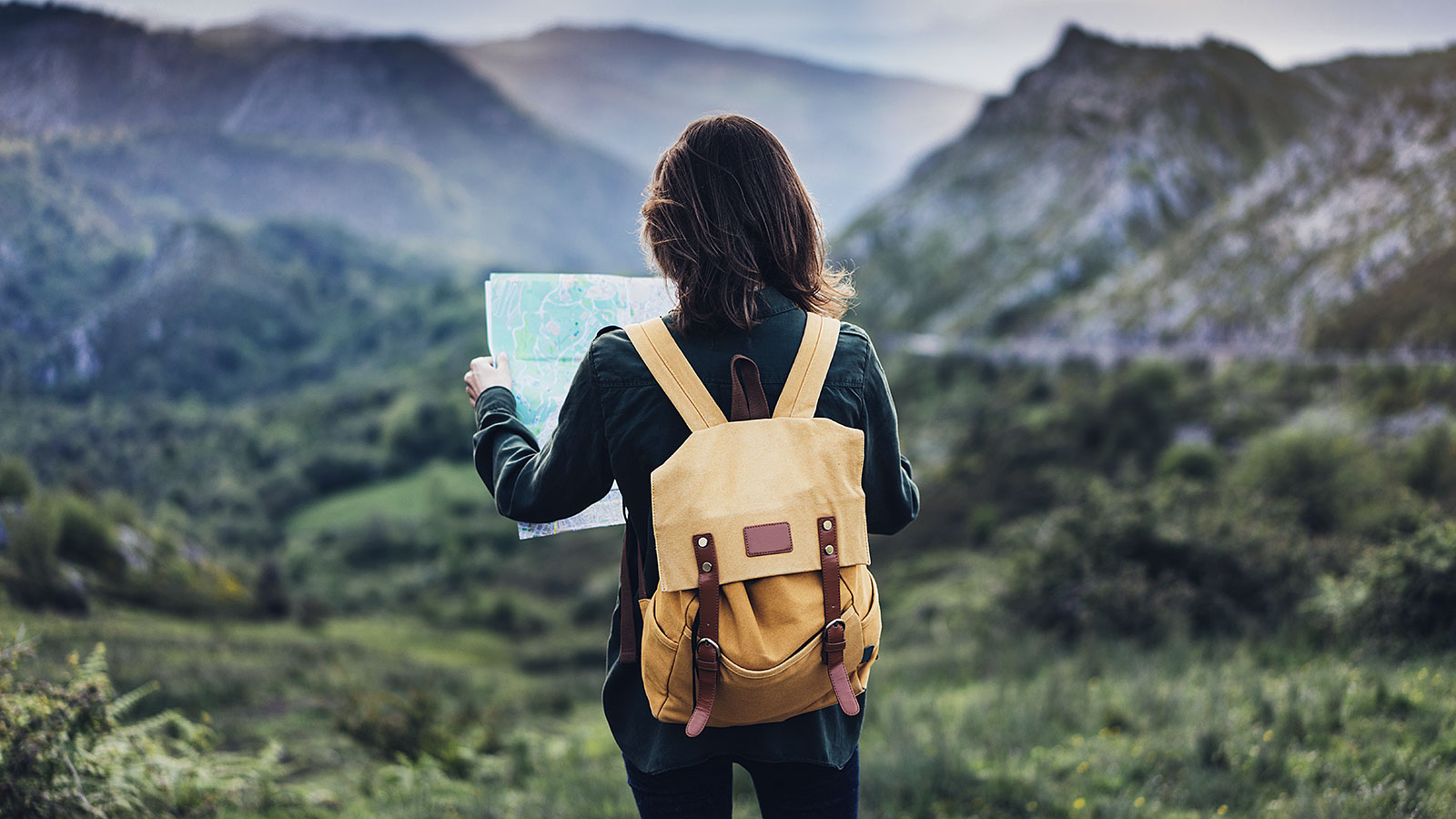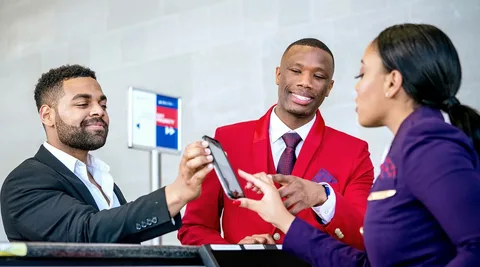Travel & Hospitality
How to Travel Light Pack Explore More

Traveling light is an art form that combines efficiency, minimalism, and strategic planning. Whether you’re a seasoned globetrotter or embarking on your first journey, mastering the skill of traveling light can significantly enhance your travel experience. This article serves as a comprehensive guide to help you understand the principles and techniques of traveling light, ensuring that you can move with ease and convenience, no matter your destination.
Philosophy of Traveling Light
Traveling light is rooted in the philosophy of minimalism and efficiency. It involves carrying only what is essential, thereby reducing the physical and mental burden of excess luggage. This approach not only simplifies your travel but also allows for greater mobility and spontaneity.
Environmental Impact
Traveling light can also contribute to reducing your environmental footprint. By packing less, you reduce the weight that transportation methods need to carry, which can lead to lower fuel consumption and emissions.

Image by yandex.com
Planning Your Trip
Understanding the climate, culture, and available amenities at your destination is crucial. Researching these aspects will help you determine what items are necessary and what can be left behind.
Create a Packing List
A well-thought-out packing list is the cornerstone of traveling light. Categorize your items into essentials, nice-to-haves, and unnecessary. Prioritize the essentials and be ruthless in cutting out the non-essentials.
Choosing the Right Luggage
Opt for lightweight, durable luggage. A carry-on suitcase or a travel backpack is ideal for most trips. Ensure the luggage meets airline size restrictions to avoid extra fees and hassles. Choose luggage with multiple compartments to keep your items organized and easily accessible. This feature is particularly useful for quickly retrieving items during security checks or while on the move. Traveling light streamlines your entire travel process. From packing and navigating airports to managing your belongings upon arrival, fewer items equate to greater efficiency. Less luggage means quicker transitions, fewer chances of losing items, and more freedom to explore without being weighed down by heavy bags.
Cost Savings
Many airlines now charge for checked bags, making it financially advantageous to travel with carry-on luggage only. Moreover, avoiding checked bags reduces the risk of lost or delayed luggage, which can incur additional costs and inconvenience.

Image by yandex.com
Environmental Impact
By traveling light, you contribute to reducing your carbon footprint. Lighter luggage means less fuel consumption for transport, aligning your travel habits with sustainable practices. Before you start packing, research your destination thoroughly. Consider the climate, cultural norms, and activities you’ll be engaging in. This information will help you determine what items are essential and what can be left behind.
Create a Packing List
A well-thought-out packing list is the cornerstone of traveling light. Start with the essentials and prioritize multi-functional items. For instance, choose clothing that can be layered and mixed and matched, and opt for travel-sized toiletries.
Packing Strategies
Selecting the appropriate luggage is crucial. A lightweight, durable carry-on suitcase or a versatile travel backpack can make all the difference. Look for features like multiple compartments, compression straps, and easy maneuverability. Pack clothing items that can serve multiple purposes. For example, a sarong can function as a beach cover-up, a scarf, or even a lightweight blanket. Choose neutral colors that can be easily coordinated.
Layering
Layering is key to adapting to different weather conditions without overpacking. Lightweight, moisture-wicking fabrics are ideal for layering and can be easily washed and dried on the go.
Minimize Toiletries
Opt for travel-sized toiletries and products with dual purposes, such as a shampoo and conditioner in one. Consider solid alternatives like bar soap and shampoo bars to avoid liquid restrictions and potential spills. Compression bags, packing cubes, and travel organizers can help you maximize space and keep your belongings orderly. These tools are especially useful for separating clean and dirty clothes or organizing small items like electronics and chargers.
Navigating airports can be a breeze when you travel light. With only carry-on luggage, you can skip long check-in lines and head straight to security. Ensure your liquids and electronics are easily accessible to expedite the screening process.
Transit Tips
Carry a lightweight, foldable tote or daypack for daily excursions. This allows you to leave your primary luggage at your accommodation while exploring. Remember to keep important documents, money, and small valuables secure and close at hand.
Accommodation Strategies
Unpack only what you need at your accommodation to maintain order and minimize repacking time. Utilize hotel amenities such as laundry services to refresh your clothing, reducing the need to pack excessive items.
Conclusion
Mastering the art of traveling light is a valuable skill that enhances your travel experience by promoting efficiency, cost savings, and sustainability. By carefully planning, choosing versatile items, and utilizing packing aids, you can enjoy the benefits of a streamlined and stress-free journey. Traveling light is a skill that can transform your travel experience, making it more enjoyable, efficient, and stress-free. By adopting the principles outlined in this article, you can learn how to travel light and reap the benefits of a streamlined approach to packing. Whether you’re embarking on a short business trip or a long-term adventure, traveling light will allow you to focus on the journey and the experiences that await you, rather than the burden of heavy luggage.
Jobs and education
IVY Overseas – Leading Study Abroad Consultants in Hyderabad

When it comes to studying abroad, having the right guidance is crucial. IVY Overseas has solidified its position as the leading study abroad consultants in Hyderabad.
Since our inception in 2011, we have been dedicated to helping students turn their dreams of studying internationally into reality.
As AIRC, ICEF, and British Certified consultants, our mission is to provide the community with the right advice to select the perfect destination, university, and program that aligns with their academic needs and career goals.

A Trusted Partner Since 2011
Over the past decade, we have assisted more than 20,000 students, guiding them through the intricate landscape of international education. With destinations including Australia, the USA, the UK, Canada, Ireland, New Zealand, France, Germany, Singapore, and Dubai, we pride ourselves on our extensive knowledge and experience across a variety of educational systems and cultures.
Every student has unique aspirations, and at IVY Overseas, we recognize the significance of studying abroad. It’s not just about education; it’s a pivotal step that shapes both personal and professional futures. Our approach focuses on understanding each student’s ambitions, which allows us to provide personalized advice that maps their journeys effectively.
The Economic Role of Students
The potential of the student community is immense. Talented learners play a vital role in shaping economies across the globe. By pursuing their education abroad, they not only gain knowledge but also contribute positively to their home countries upon returning. At IVY Overseas, we are deeply committed to nurturing this community. We believe that education is a powerful tool that fosters growth and innovation.
Tailored Guidance for Every Student
Our consultancy services go beyond mere advice. We continuously strive to improve our knowledge to help students navigate their academic paths. Our dedicated team takes time to understand the academic requirements and career ambitions of our clients. This personalized approach ensures students are well-informed when it comes to choosing their preferred destination, institution, and program.
Our consultants offer insights into various factors that might influence a student’s choice. We discuss aspects such as course content, university rankings, living conditions, cultural experiences, and post-study work opportunities. The holistic understanding we provide equips students with the knowledge they need to make informed decisions about their futures.
Studying in Diverse Destinations
When exploring study abroad options, students can choose from a plethora of countries. Each destination offers its own unique advantages:
-
Australia and New Zealand: Renowned for their top-notch educational systems and lively cultures, these nations offer a superb atmosphere for international learners, along with chances for employment and studying.
-
United States & Canada: Home to many of the globe’s leading universities, these North American nations provide varied programs and a diverse environment that encourages creativity and innovation.
-
United Kingdom & Ireland: Abundant in history, these locations offer not only excellent educational opportunities but also connections to significant cultural and professional networks.
-
France and Germany: Famous for their technological innovations and business courses, these European countries provide outstanding education in multiple domains, such as arts and sciences.
-
Singapore and Dubai: Both emerging educational centers offer superb infrastructure and an international perspective for learners, particularly in business and technology sectors
The Value of Expert Consultancy
Navigating the complexities of the study abroad landscape can be daunting. At IVY Overseas, we facilitate this journey by providing expert consultancy every step of the way. Our team ensures that each aspect of the process—from application deadlines and visa requirements to accommodation and financial planning—is tracked and managed effectively.
We coach students on the application process, assist in crafting compelling personal statements, and provide interview preparation tips. Moreover, our support extends beyond the application phase; we also guide students in adjusting to their new environments once they arrive at their chosen institutions.
Success Stories: Transforming Dreams into Reality
The success of IVY Overseas is evident in the countless success stories of students who have achieved their academic and career aspirations with our help. Many of our clients have gone on to attend prestigious universities, secure internships, and even launch successful careers after completing their studies abroad.
We celebrate each achievement, as it symbolizes our commitment to shaping futures. Our track record inspires confidence and trust among prospective students and their families.
Your Next Step Toward Global Opportunities
If you are considering studying abroad, choosing the right consultancy can make a world of difference. At IVY Overseas, we offer a unique combination of industry expertise, personalized service, and a genuine desire to help students succeed.
With over a decade of experience and thousands of successful placements, we stand ready to assist you. Explore your options and realize your potential with IVY Overseas.
Conclusion
Embarking on a study abroad journey is a defining moment in a student’s life. With the right support, it can be one of the most enriching experiences, leading to personal growth and academic success. At IVY Overseas, our commitment to nurturing student aspirations ensures that you are never alone on this journey.
Lifestyle
Luxury Villas in Sri Lanka: Beachfront Villas & Royalindigovilla

Sri Lanka has become one of the world’s most sought‑after destinations for travelers seeking a blend of culture, natural beauty, and unmatched hospitality. Among the island’s many charms, the rise of luxury villas Sri Lanka has redefined how visitors experience this tropical paradise.
From tranquil jungle retreats to dramatic cliffside estates, these properties deliver privacy, personalized service, and unforgettable ocean views. Among the most desirable options are those clustered along the pristine southern coastline, where white sand beaches meet the Indian Ocean in a stunning display of blue hues.

In the serene bay of Thalpe, a coastal village just minutes from the historic Galle Fort, you will find the epitome of refined island living. The thalpe villa concept has gained attention for offering exclusive stays that feel like a private home rather than a hotel room. These villas are designed for discerning guests who seek bespoke experiences—whether a secluded honeymoon escape, a family vacation, or an extended wellness retreat.
Why Choose Luxury Villas in Sri Lanka?
What sets luxury villas Sri Lanka apart from conventional hotel stays is the degree of flexibility and personalization available to guests. Each villa typically includes dedicated staff such as private chefs, housekeepers, and concierge services, allowing you to tailor every aspect of your trip. Unlike resort settings with fixed schedules, villa living allows you to set your own rhythm—breakfast on the terrace at sunrise, sunset yoga on the lawn, or a candlelit dinner under the stars.
Many of these properties are strategically located as villas by the sea , offering direct beachfront access or elevated panoramas of the ocean. Imagine waking up to the sound of rolling waves, stepping out onto your private deck, and watching fishing boats drift across the horizon. Whether you plan to swim, surf, or simply relax with a book by the water, staying in a villa by the sea places the beach right at your doorstep.
The Allure of Thalpe Villa Experiences
Thalpe’s gentle bay and sheltered waters make it particularly attractive for families and couples alike. A thalpe villa often features contemporary design with local influences—open‑air living spaces, thatched roofs, natural wood finishes, and seamless transitions between indoor and outdoor areas. Many properties also include private pools, landscaped gardens, and comfortable lounges that encourage communal living.
Despite its peaceful ambiance, Thalpe is only a short drive from Galle, allowing guests to explore the UNESCO‑listed Dutch Fort, boutique shops, art galleries, and fine dining establishments. As a result, travelers can enjoy both quiet relaxation and cultural exploration without long journeys.
Spotlight on Royalindigovilla
One standout among the many options is royalindigovilla, a luxury property that exemplifies the best of coastal living in Sri Lanka. This villa captures both elegance and comfort while providing guests with immersive experiences tailored to their preferences.
Royalindigovilla’s architecture embraces local aesthetics and international standards, making it a perfect choice for those who want refined living without sacrificing authentic island character.
Royalindigovilla’s location as one of the premier villas by the sea ensures unrivaled ocean views, spectacular sunsets, and access to soft sandy beach just steps away. The property is designed to accommodate groups of different sizes, whether you are traveling as a couple, a family, or with friends. Interiors are spacious and thoughtfully arranged, with high ceilings, natural light, and décor that reflects Sri Lanka’s vibrant heritage.
What draws many travelers to royalindigovilla is the level of service and attention to detail. Guests often highlight the villa’s private chef, who prepares meals based on your tastes using fresh local ingredients—from seafood caught the same day to tropical fruits harvested at peak ripeness.
Meanwhile, the team takes care of every logistical detail, from airport transfers to excursions to nearby attractions such as whale watching tours, turtle hatcheries, or tea plantation day trips.
Villas by the Sea: A Growing Trend
The appeal of villas by the sea in Sri Lanka goes beyond scenic beauty. Many travelers are now prioritizing privacy, personalized service, and unique living experiences, all of which villas excel at providing. Unlike traditional beachfront hotels, villas maximize space and flexibility. You can host private celebrations, enjoy al fresco dinners on your terrace, or unwind with a deep soak in your infinity pool while overlooking the sea.
Across the south coast—from Hikkaduwa and Unawatuna to Mirissa and Weligama—villas by the sea are transforming the hospitality landscape. These properties cater to diverse guest expectations, whether it’s minimalist modern design, Balinese‑inspired sanctuaries, or grand estates with multiple bedrooms and entertainment areas.
Planning Your Sri Lanka Villa Getaway
When organizing a trip focused on luxury villas Sri Lanka, consider the following tips to make the most of your stay:
-
Timing Matters: Sri Lanka’s southern coast enjoys the best weather from December to April, making it ideal for beach activities and outdoor living.
-
Customize Your Experience: Work with villa staff or a local travel specialist to build an itinerary that reflects your interests—whether that includes surfing lessons, Ayurvedic spa treatments, cultural tours, or culinary classes.
-
Consider Group Travel: Villas like royalindigovilla are perfect for groups and multigenerational travel, offering shared communal spaces alongside private retreats.
-
Ask About In‑Villa Services: Many properties provide in‑house dining, spa therapists, childcare services, photography sessions, and more. Planning these details ahead of time ensures a seamless experience.
-
Respect the Local Culture: Sri Lanka is rich in history and tradition, and incorporating visits to local temples, markets, and villages can deepen your connection to the destination.
Conclusion
Sri Lanka’s coastline has emerged as one of the most compelling destinations for travelers seeking a blend of luxury, serenity, and authenticity. With an increasing selection of luxury villas Sri Lanka, guests can enjoy private, fully serviced accommodations that elevate every moment of their stay.
In particular, a thalpe villa offers a serene base from which to explore the southern shores, while standout properties like royalindigovilla set the standard for refined oceanfront living.
For those who value space, service, and spectacular scenery, choosing one of the many villas by the sea in Sri Lanka is a decision that transforms a holiday into an unforgettable coastal experience.
Costumer Services
Delta Airlines Customer Service: Your Essential Guide

Flying can be exciting, but let’s be real — travel plans don’t always go smooth. Flights get delayed, seats change, bags go missing, or you just need to fix something on your booking. When that happens, having access to solid Delta Airlines customer service makes a big difference. Delta is one of the largest airlines in the world, and they handle millions of customer requests every year through phone, online tools, and airport staff.
This guide breaks down how Delta Airlines customer service works, how to find the Delta Airlines customer service number, how to reach Delta Airlines 24 hour customer service, and tips to speak to a representative without wasting time.

Delta Airlines Customer Service Phone Support
For most travelers, calling is still the fastest way to fix an issue. The main Delta Airlines customer service number in the United States is:
Many people refer to this line DELTA Airlines or Delta Airlines 1800 customer service, and it connects you to reservations, changes, cancellations, and general support.
You can call directly at Delta Airlines using this number for help with:
- New flight bookings
- Flight changes or cancellations
- Seat upgrades and class changes
- Delayed or canceled flights
- General travel questions
This phone line is part of Delta Airlines 24 hour customer service, meaning you can call anytime, day or night.
Delta Airlines 24 Hour Customer Service Availability
One thing Delta does right is accessibility. Because Delta operates flights across the globe, their customer service is open 24 hours a day, 7 days a week. That means even if your flight gets canceled at midnight or early morning, you don’t have to wait until business hours.
If you’re dealing with urgent issues like:
- Missed connections
- Overnight cancellations
- Same-day flight rebooking
- Weather delays
You can rely on Delta Airlines 24 hour customer service to assist. Calling the Delta Airlines customer service call line late at night sometimes even results in shorter wait times, which is a nice bonus.
How to Speak to a Real Person at Delta Airlines
Automated phone systems can be frustrating, especially when you already feel stressed. If your goal is to Delta Airlines speak to representative, there are a few tricks that help.
Here’s what usually works best:
- Dial
- When the automated system starts, say “representative” or “agent” clearly.
- If prompted to press buttons, try pressing 0 multiple times.
- Stay on the line — sometimes it routes you automatically.
Once connected, explain your situation calmly and clearly. Having your confirmation number ready can speed things up alot.
Delta Airlines Customer Service for Baggage Issues
Lost or delayed baggage can ruin a trip fast. Delta offers dedicated support for baggage problems.
Delta Baggage Service Number:
You should contact Delta right away if:
- Your bag didn’t arrive
- Your luggage was damaged
- You received the wrong bag
In many cases, Delta can track your bag and arrange delivery directly to your hotel or home.
Delta Airlines Refund and Cancellation Support
Refunds are one of the most common reasons travelers contact Delta Airlines customer service. Depending on your ticket type, refunds can be automatic or require agent assistance.
For refund-related help, you can call:
Delta Refund Status Line:
Delta representatives can help with:
- Refund eligibility
- Refund processing times
- Credits vs original payment method
- Cancelled or disrupted flights
Keep in mind that refunds don’t always happen instantly. It can take several business days, sometimes longer depending on your bank.
Delta SkyMiles Customer Service
If you’re a frequent flyer, Delta’s SkyMiles program has its own support team.
SkyMiles Customer Service:
You can contact SkyMiles support for:
- Missing miles
- Account access problems
- Award ticket bookings
- Mileage upgrades
Calling the SkyMiles line often gets faster service if your issue is loyalty-related.
Online Delta Airlines Customer Service Options
Not everyone wants to sit on hold. Delta also provides several online support options that work pretty well for non-urgent issues.
Live Chat
Delta offers live chat support through their official website.
Live chat is useful for quick questions like seat assignments, baggage rules, or checking flight status.
Manage My Trips Online
Many tasks don’t even require talking to support. Through Manage My Trips, you can:
- Change or cancel flights
- Select seats
- Add baggage
- Request upgrades
Delta Mobile App Support
The Fly Delta App is another easy way to manage bookings and contact customer service. It gives you real-time updates and access to support features right from your phone.
Airport Customer Service Counters
Sometimes, the best solution is in-person help. Delta has customer service desks at most major airports. These agents can help with:
- Same-day flight changes
- Missed connections
- Standby options
- Baggage claims
If you’re already at the airport, this can be faster than making a Delta Airlines customer service call.
When You Should Call Delta Airlines Customer Service
Calling works best when the issue is complicated or urgent, such as:
- Flights canceled due to weather
- International travel changes
- Medical or special assistance requests
- Multi-city itinerary problems
In these cases, it’s better to call directly at Delta Airlines instead of using automated tools.
Tips to Get Faster Delta Airlines Customer Service
- Call during early morning or late night hours
- Keep your booking number ready
- Use live chat for basic questions
- Be polite but clear with agents
- Double-check self-service options first
A little prep can save a lot of time, especially during peak travel seasons.
-
Business2 years ago
Cybersecurity Consulting Company SequelNet Provides Critical IT Support Services to Medical Billing Firm, Medical Optimum
-
Business3 years ago
Team Communication Software Transforms Operations at Finance Innovate
-
Business3 years ago
Project Management Tool Transforms Long Island Business
-
Business2 years ago
How Alleviate Poverty Utilized IPPBX’s All-in-One Solution to Transform Lives in New York City
-
health3 years ago
Breast Cancer: The Imperative Role of Mammograms in Screening and Early Detection
-
Sports3 years ago
Unstoppable Collaboration: D.C.’s Citi Open and Silicon Valley Classic Unite to Propel Women’s Tennis to New Heights
-
Art /Entertainment3 years ago
Embracing Renewal: Sizdabedar Celebrations Unite Iranians in New York’s Eisenhower Park
-
Finance3 years ago
The Benefits of Starting a Side Hustle for Financial Freedom






























